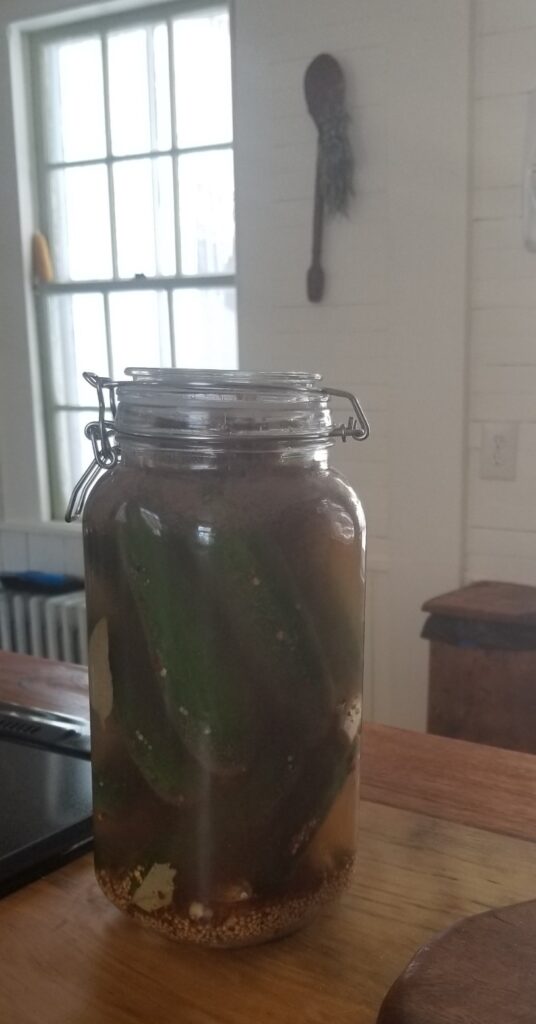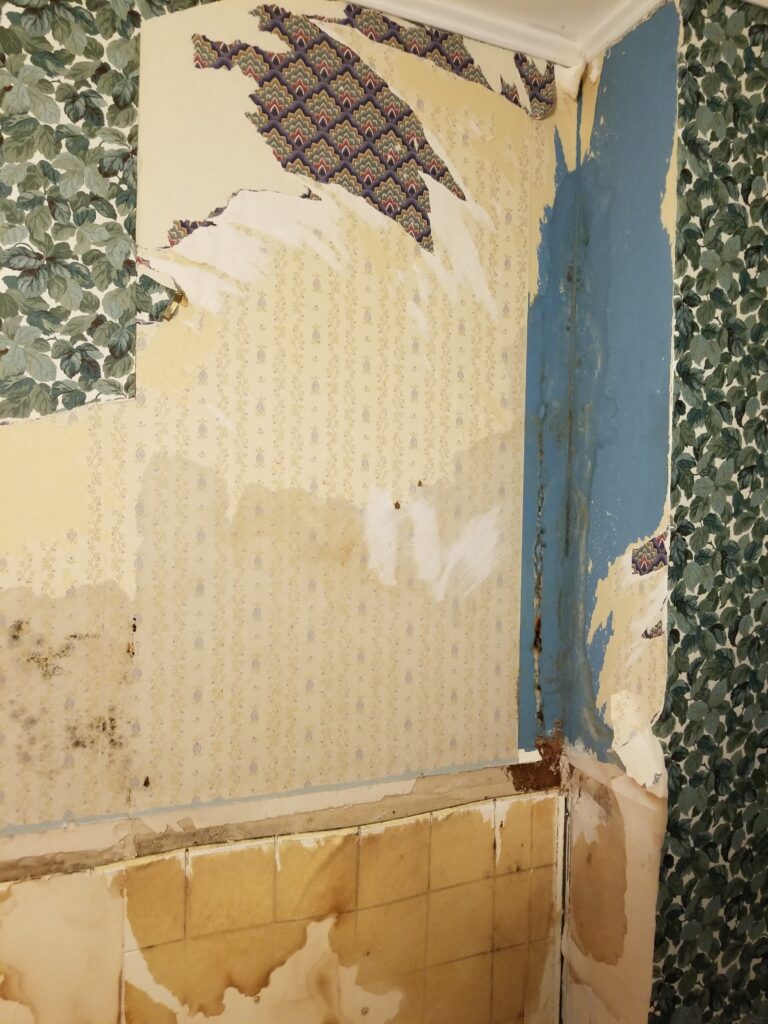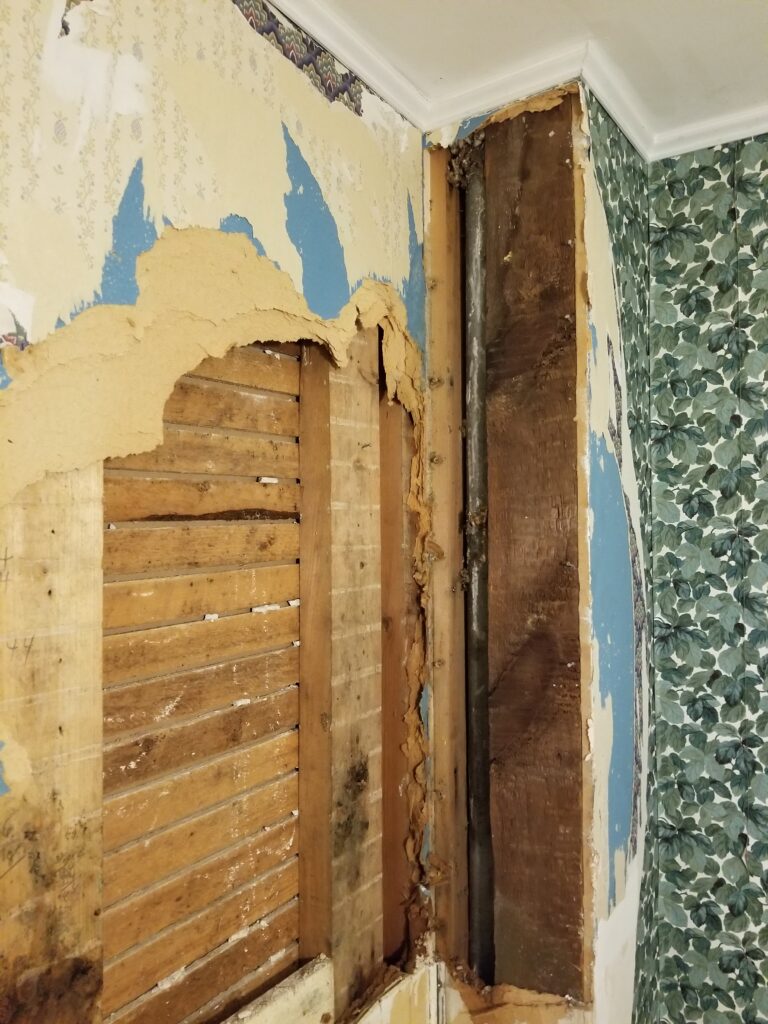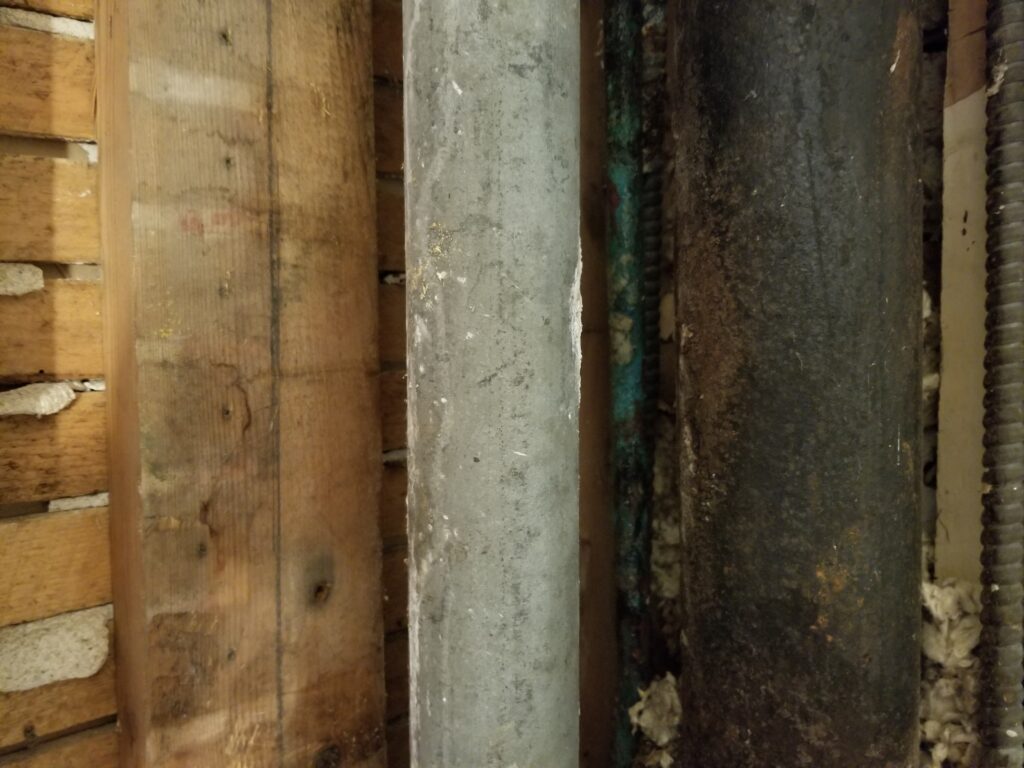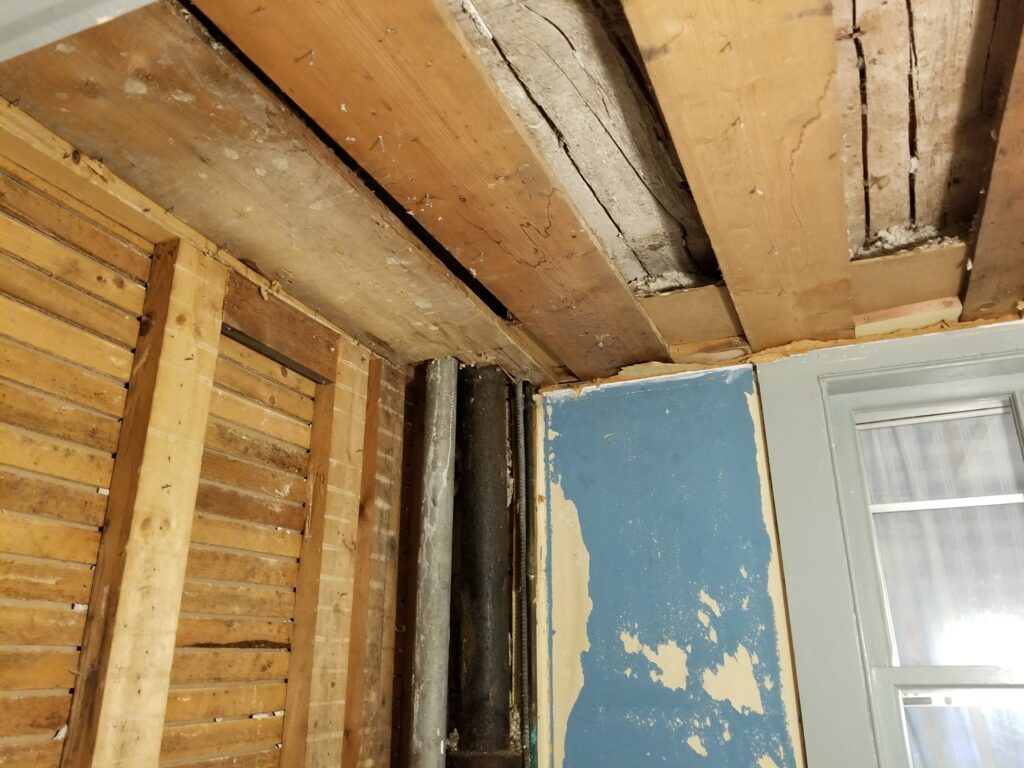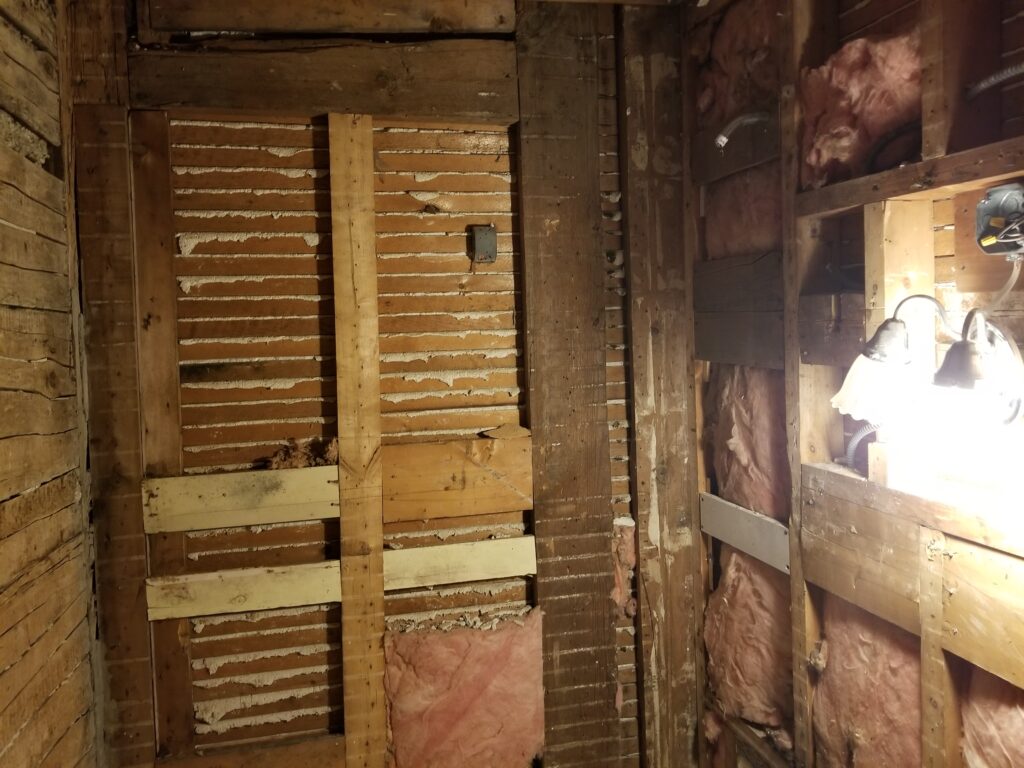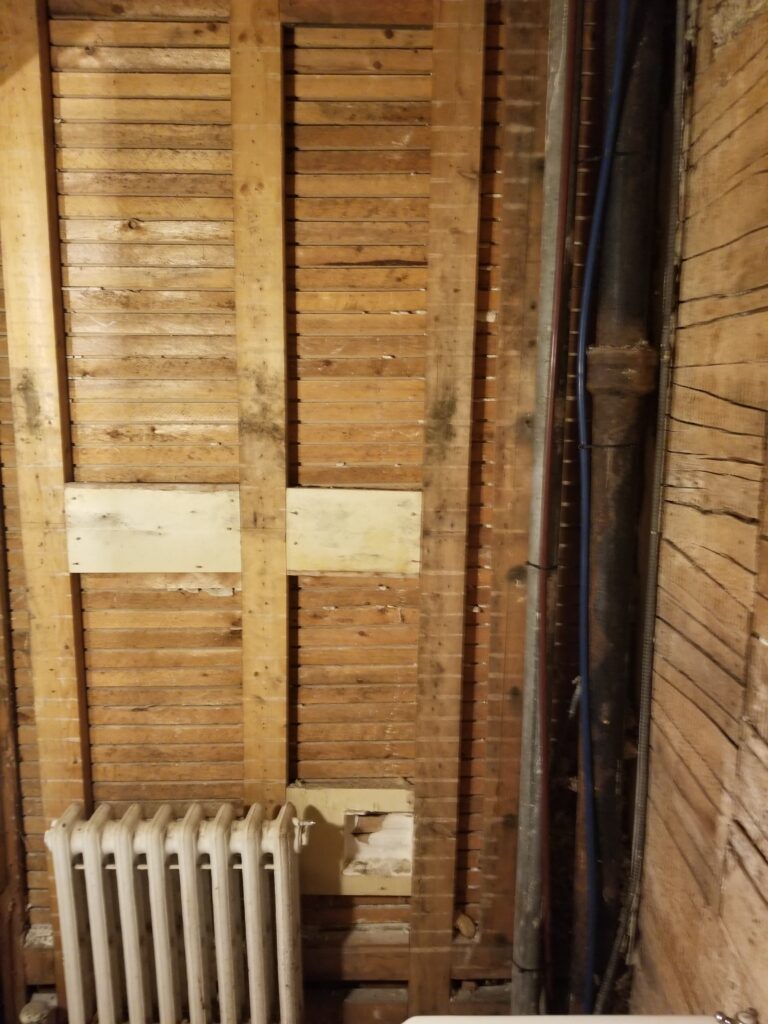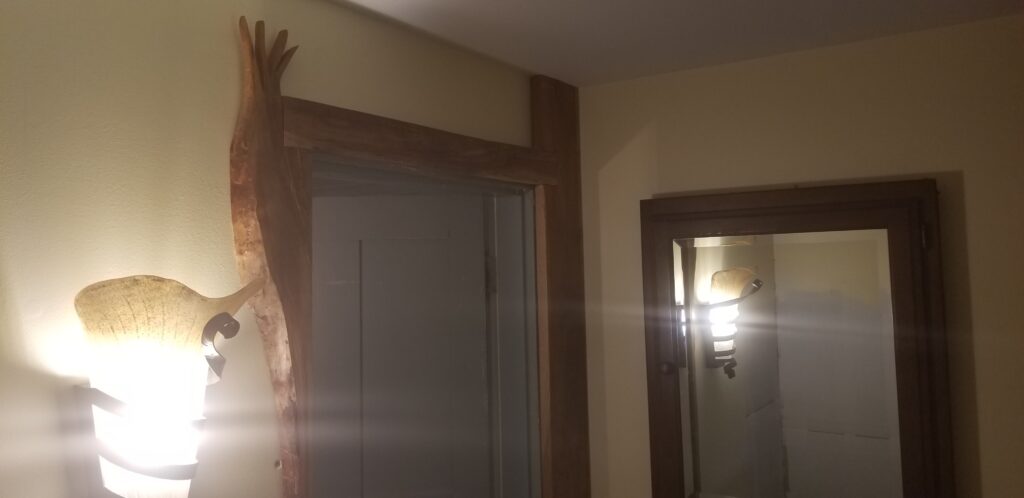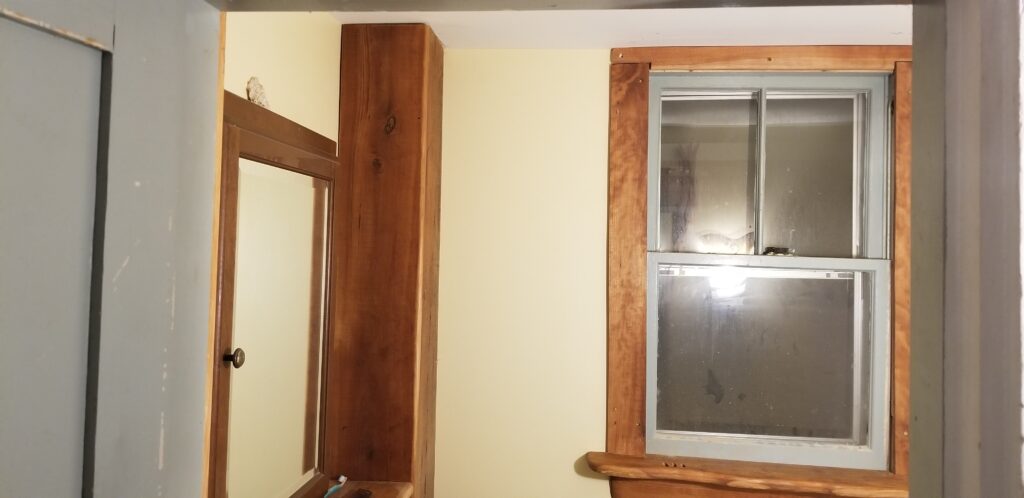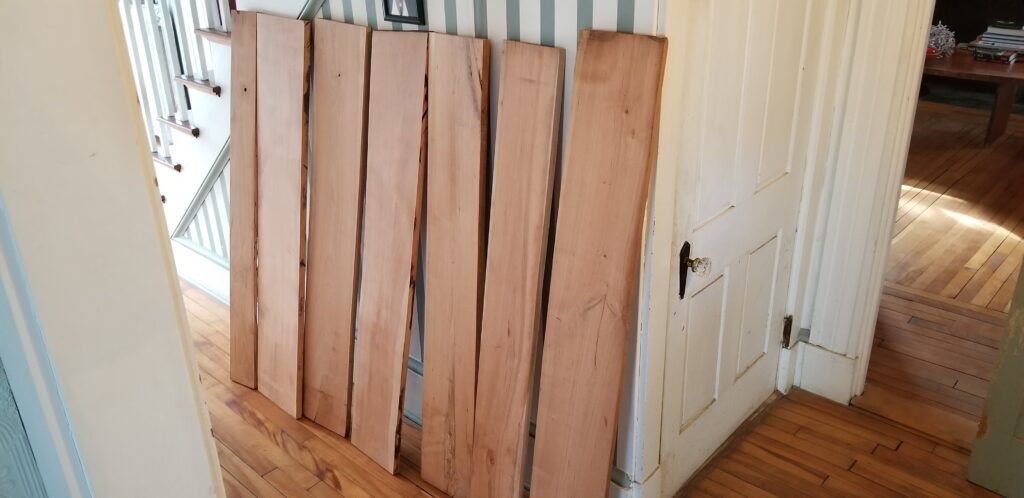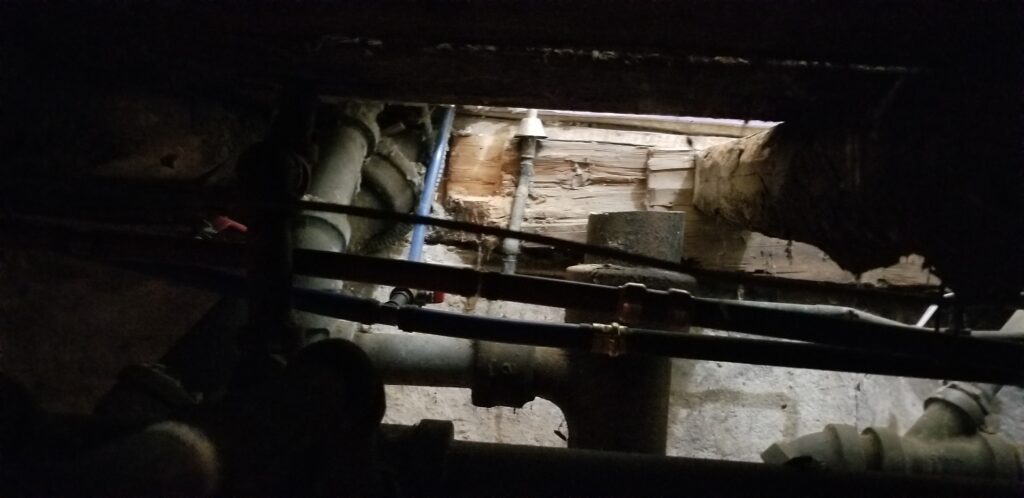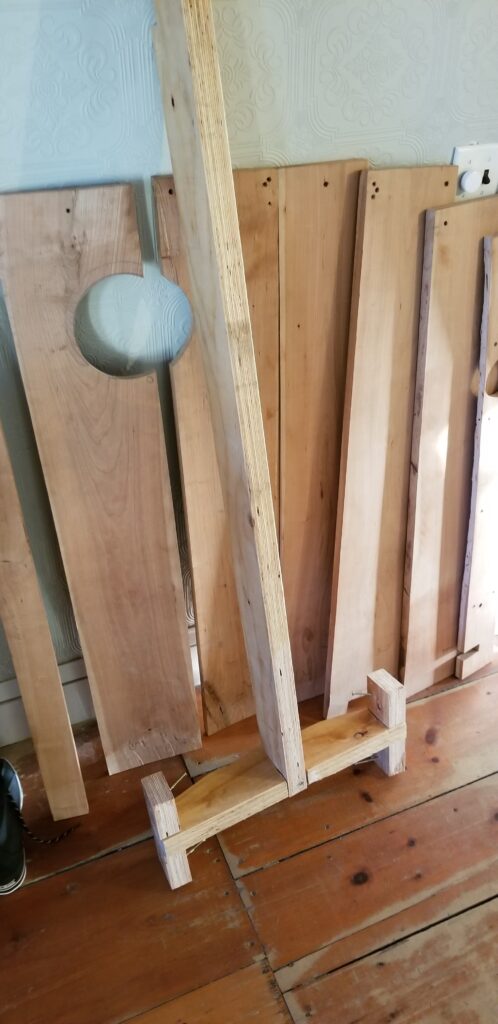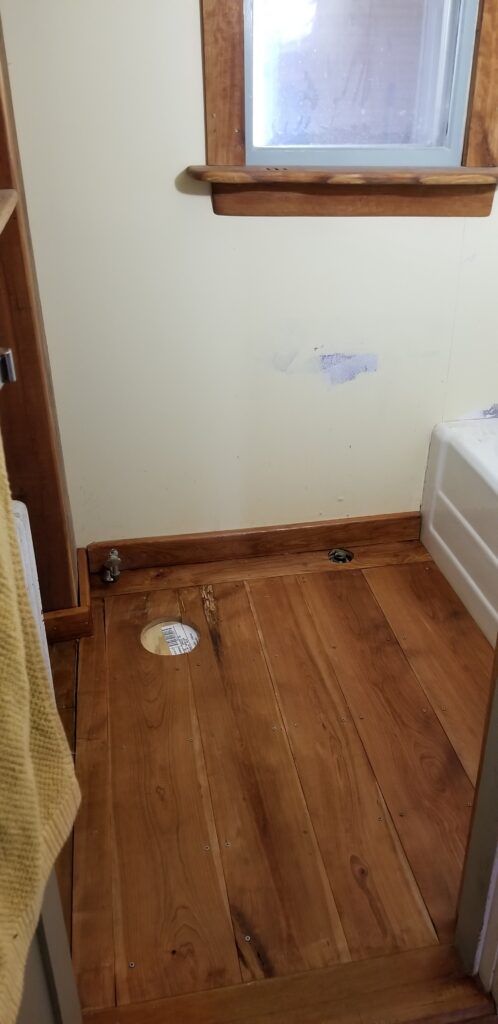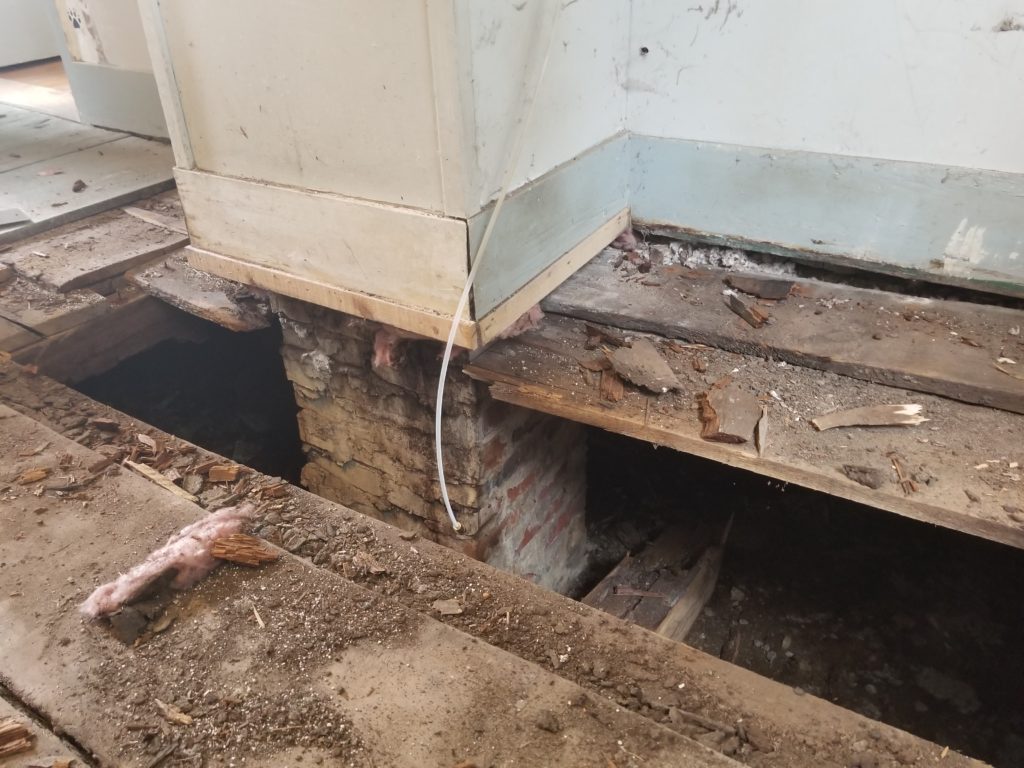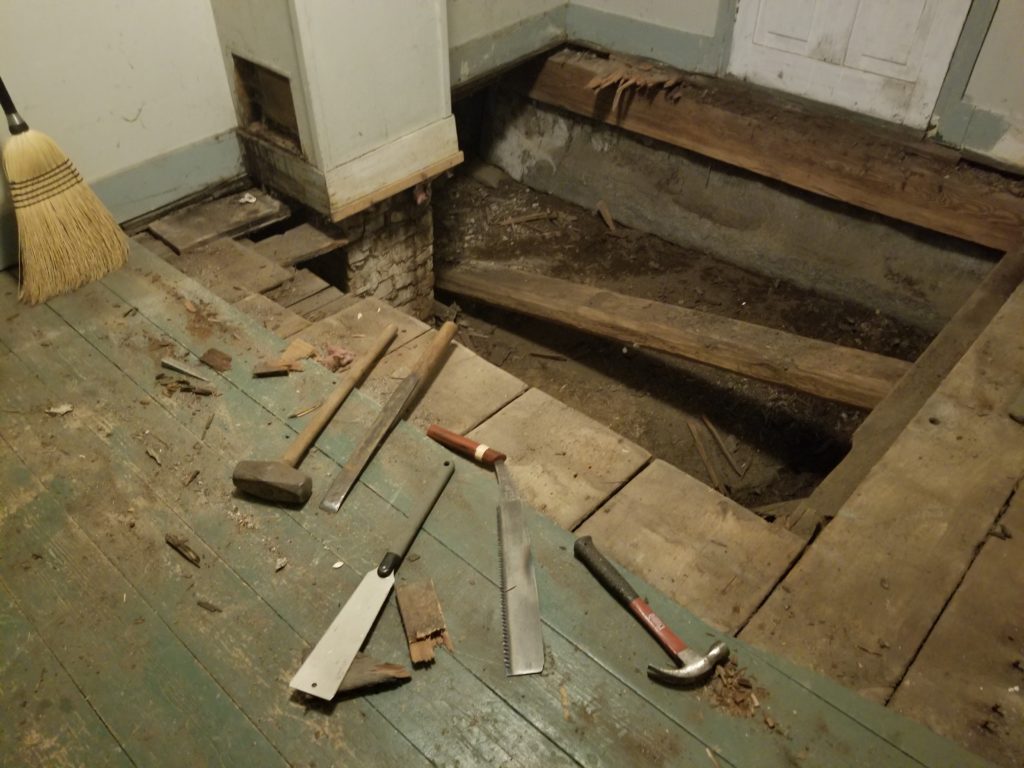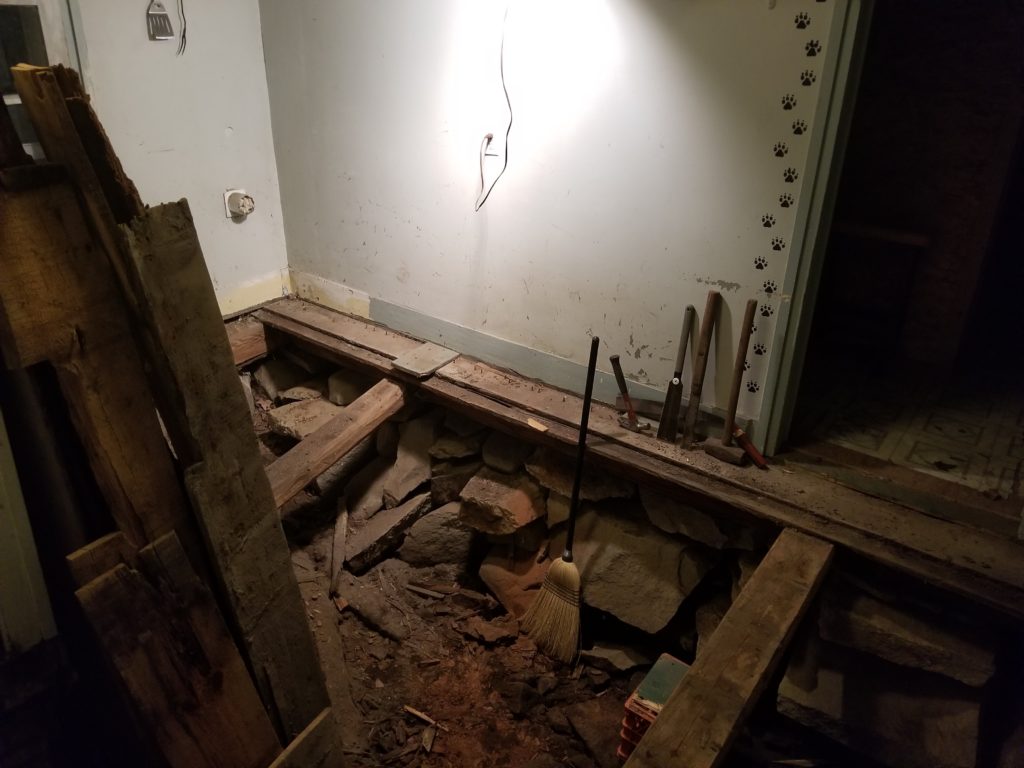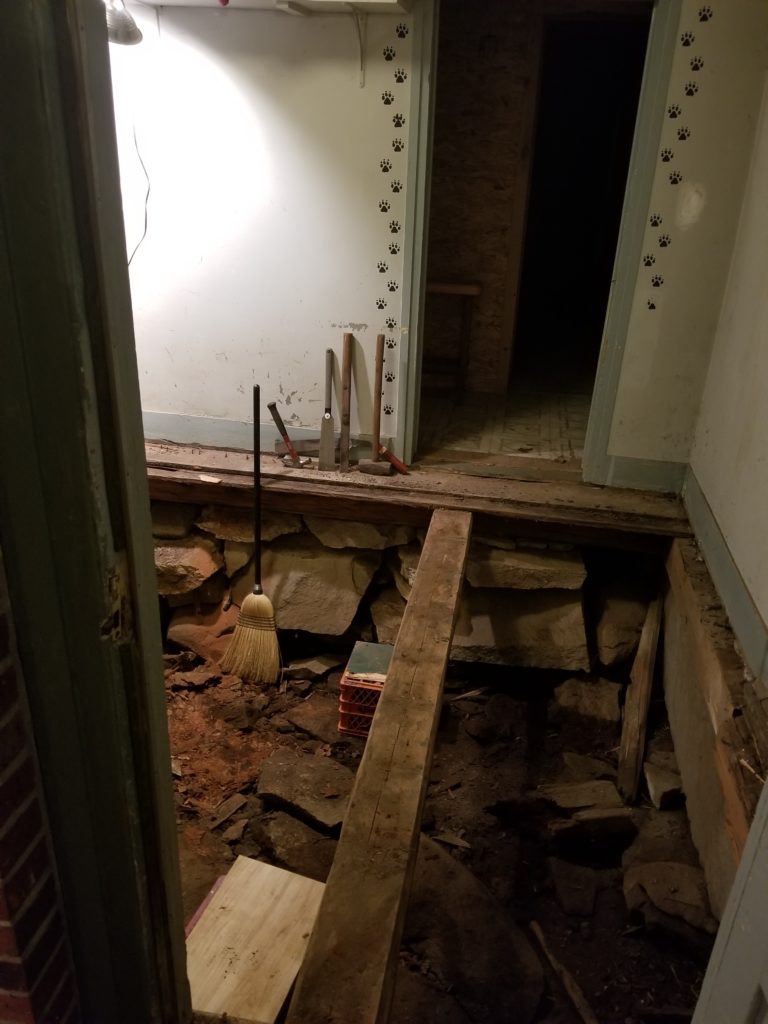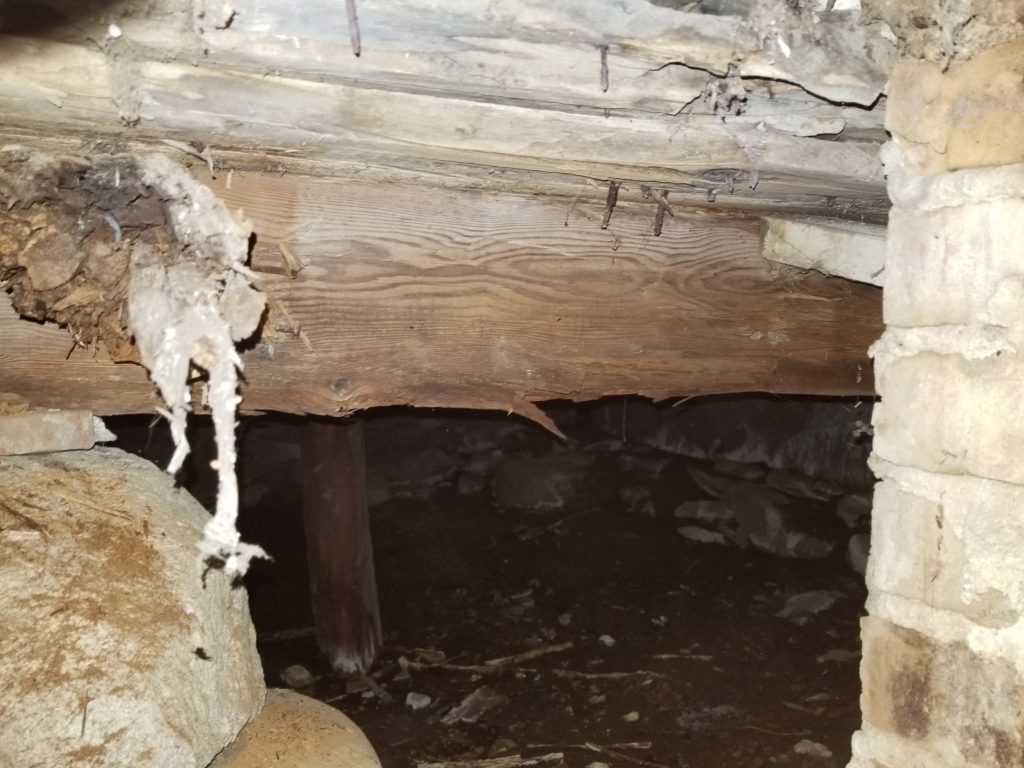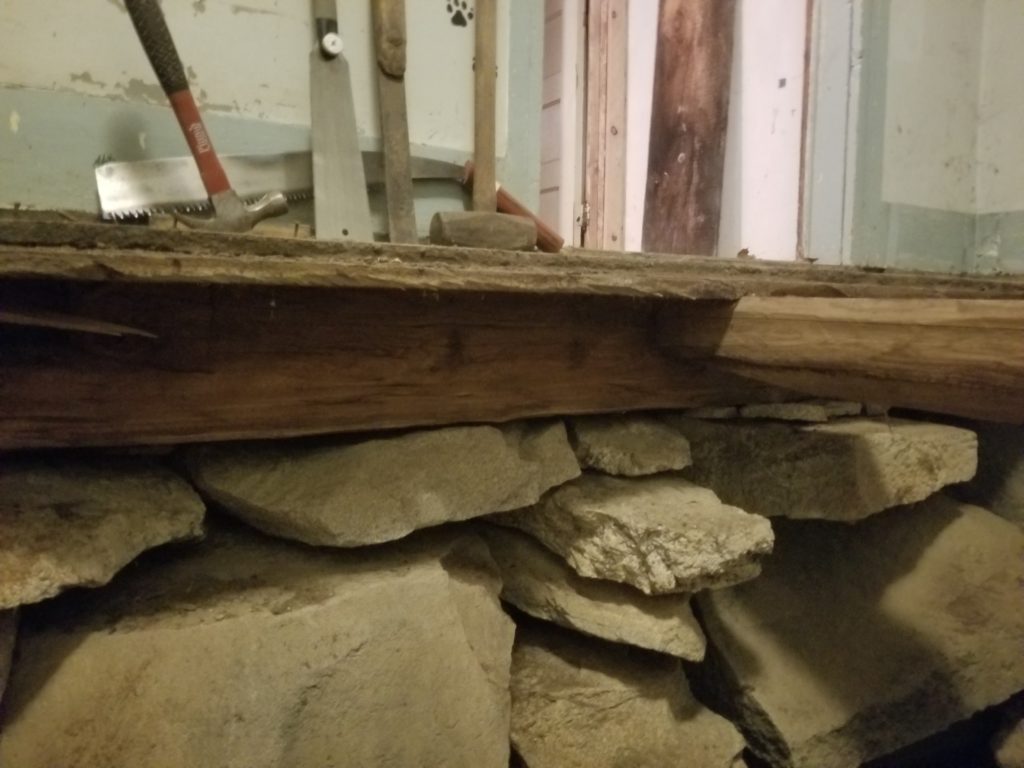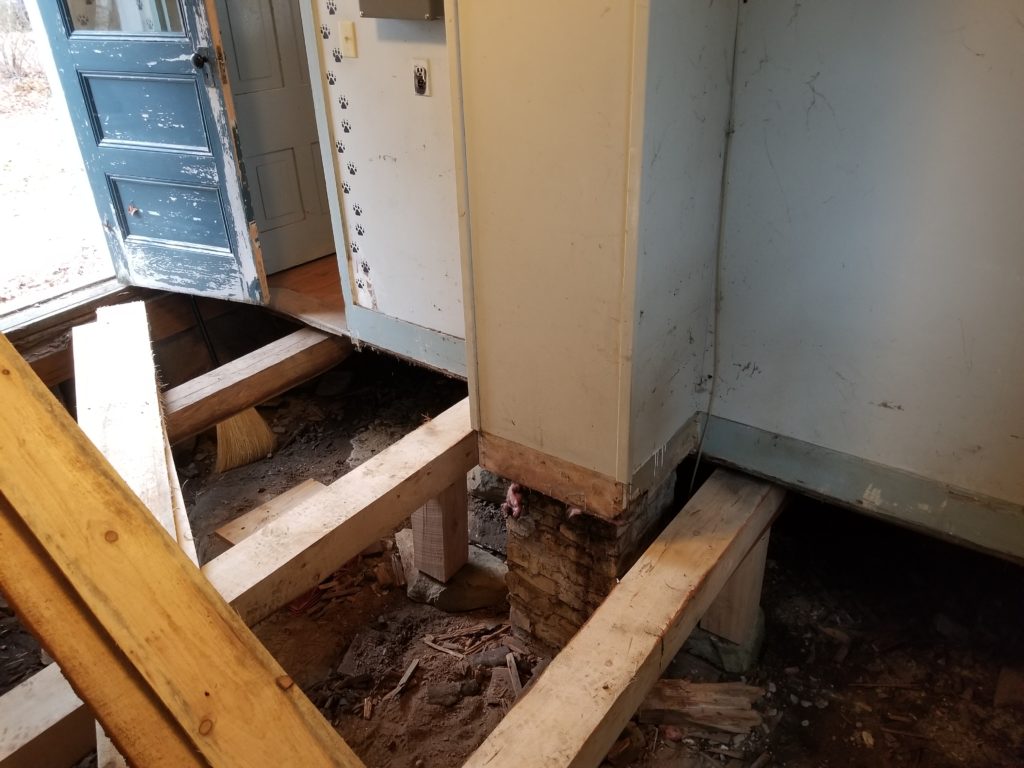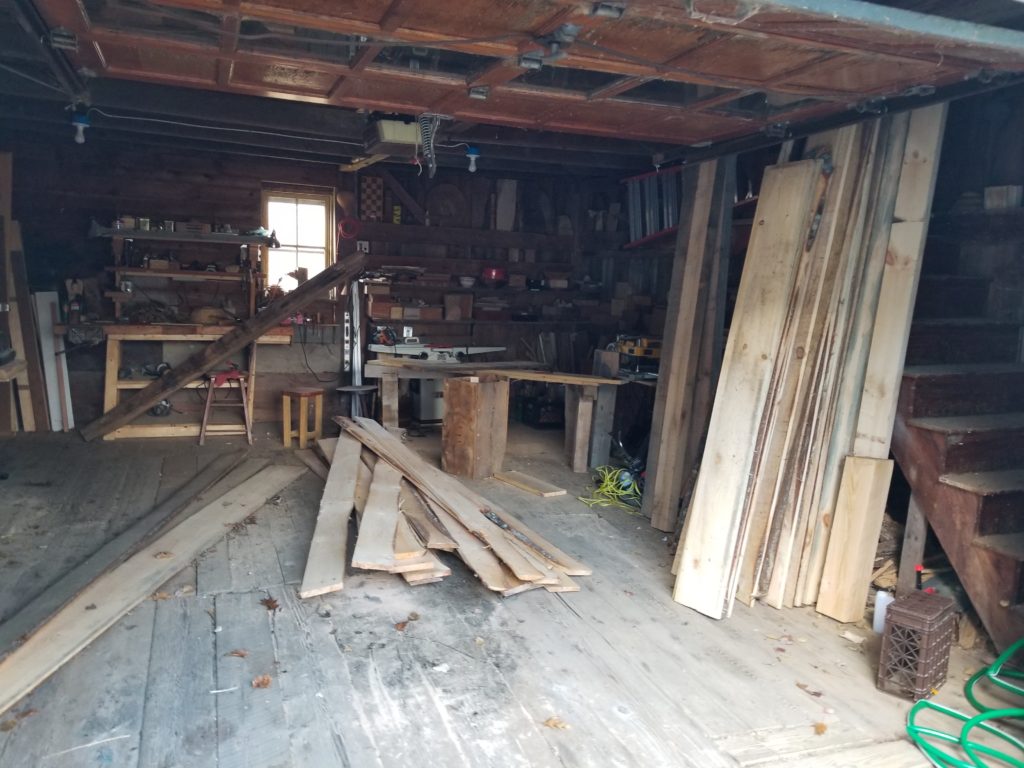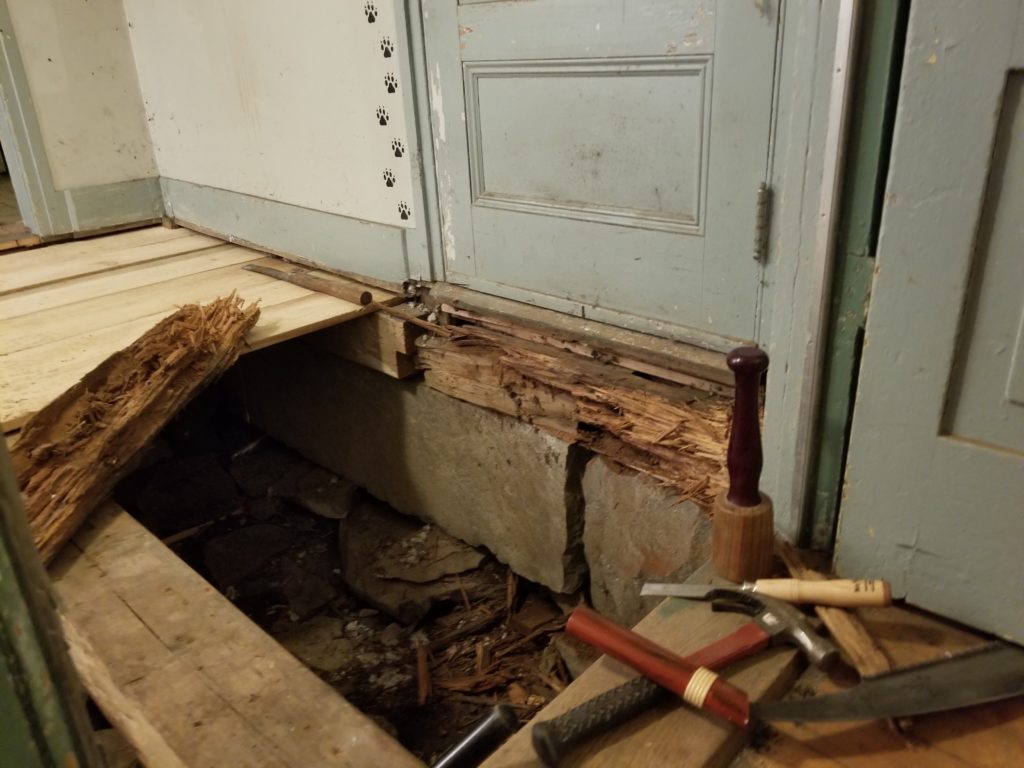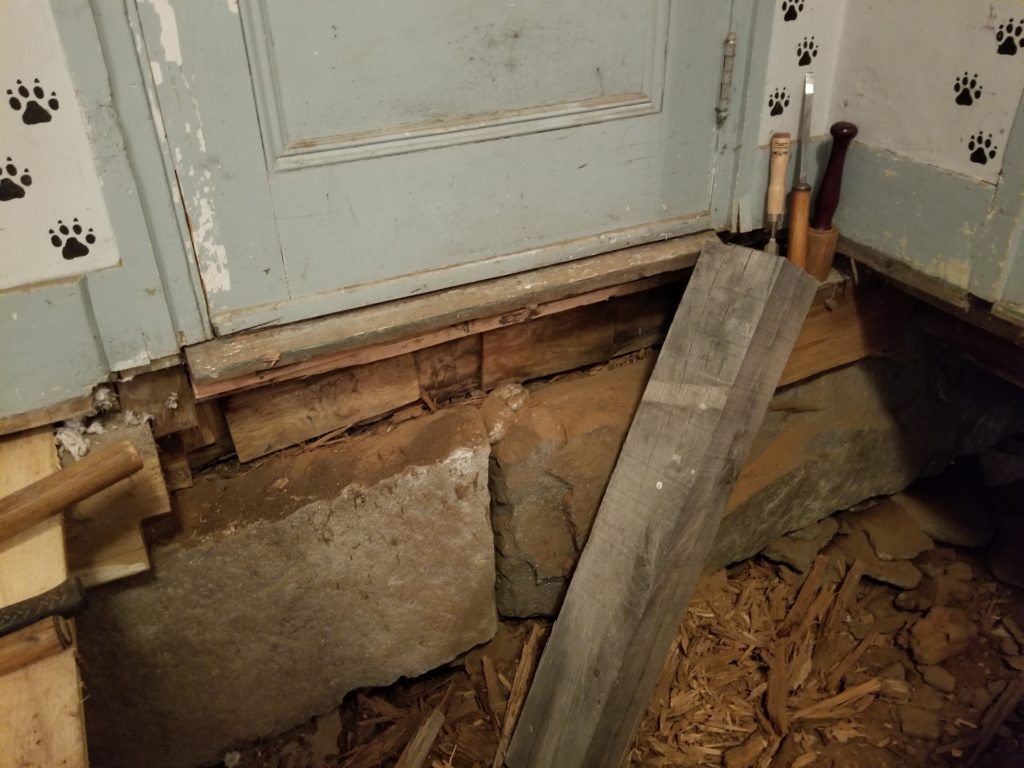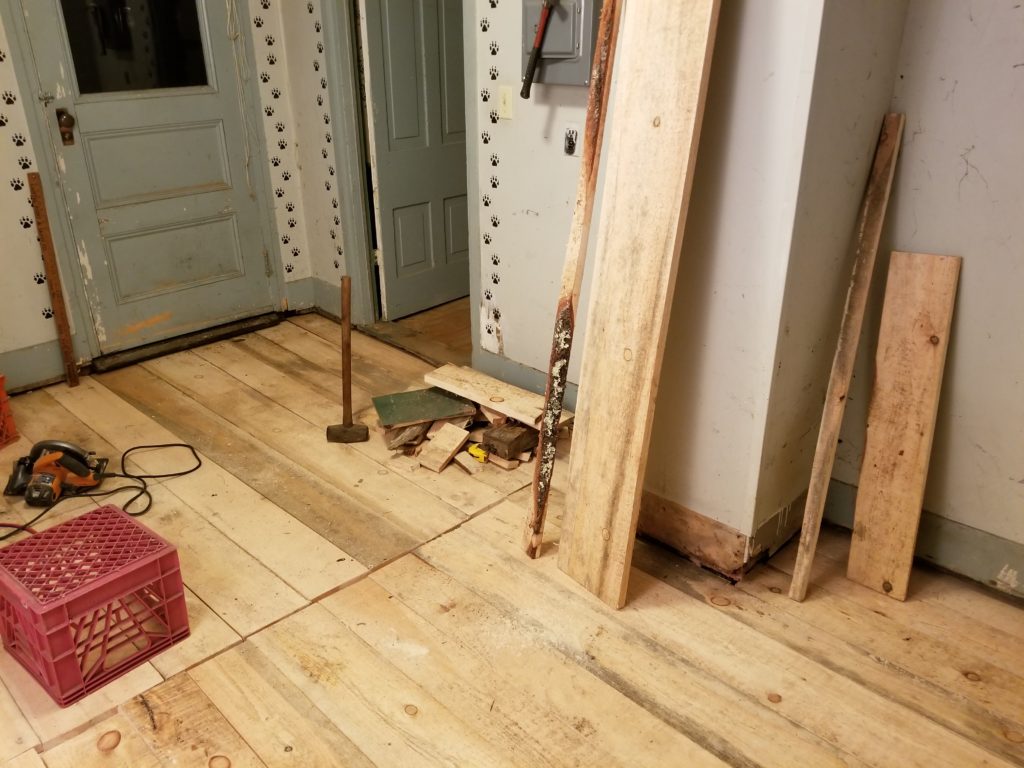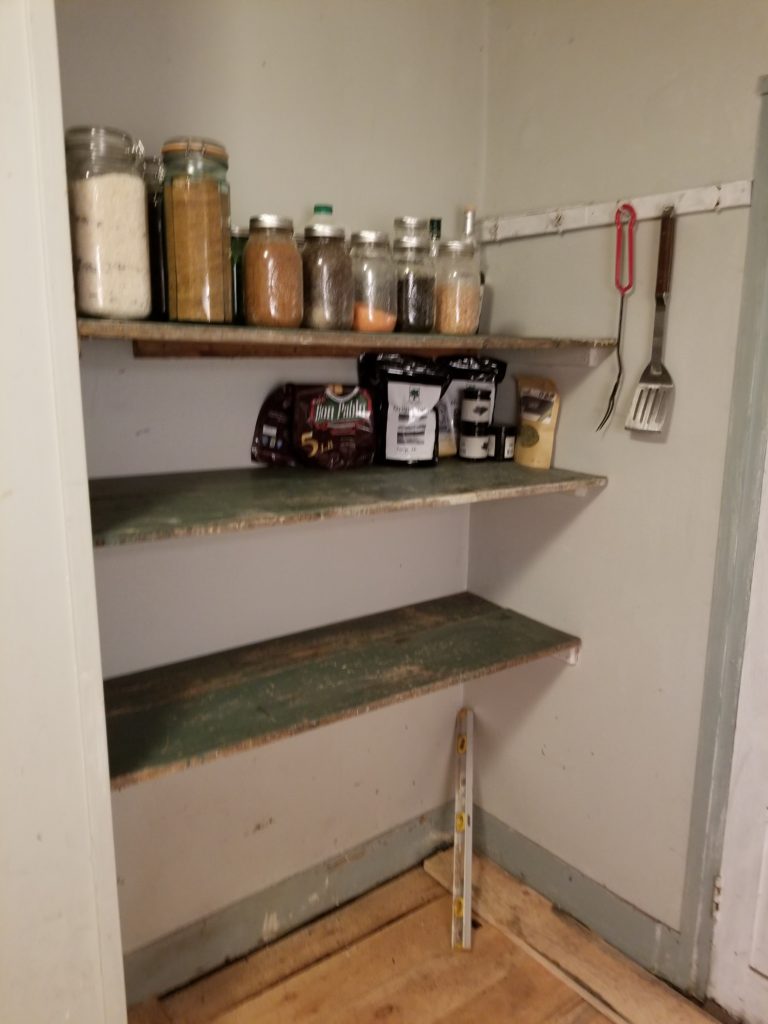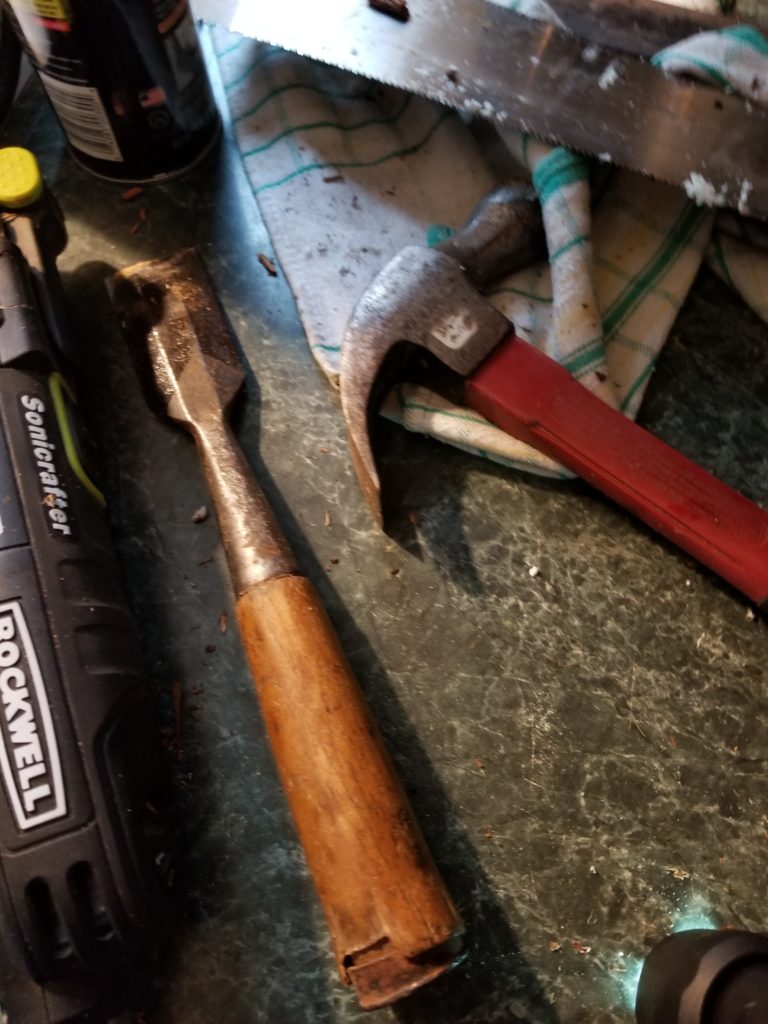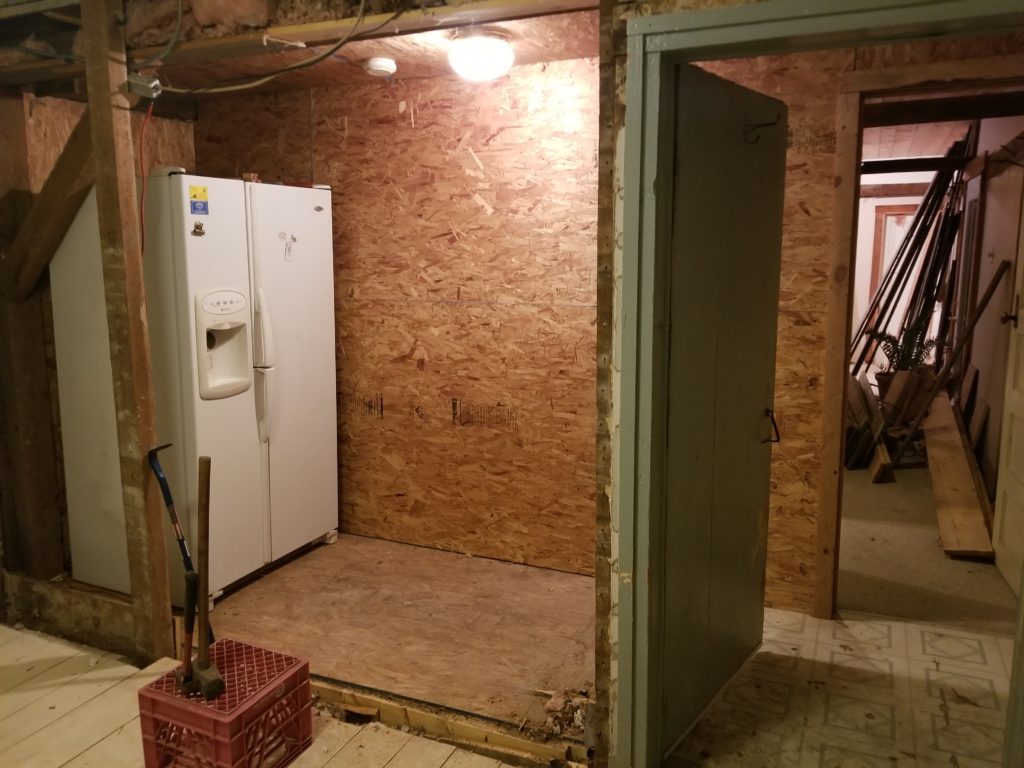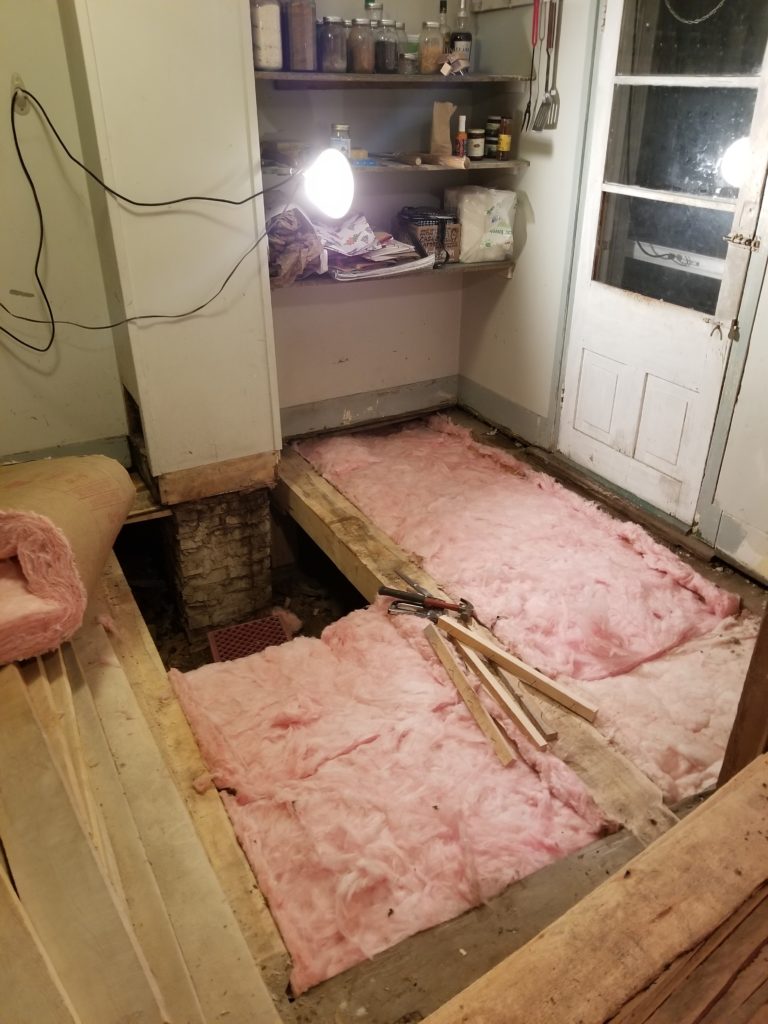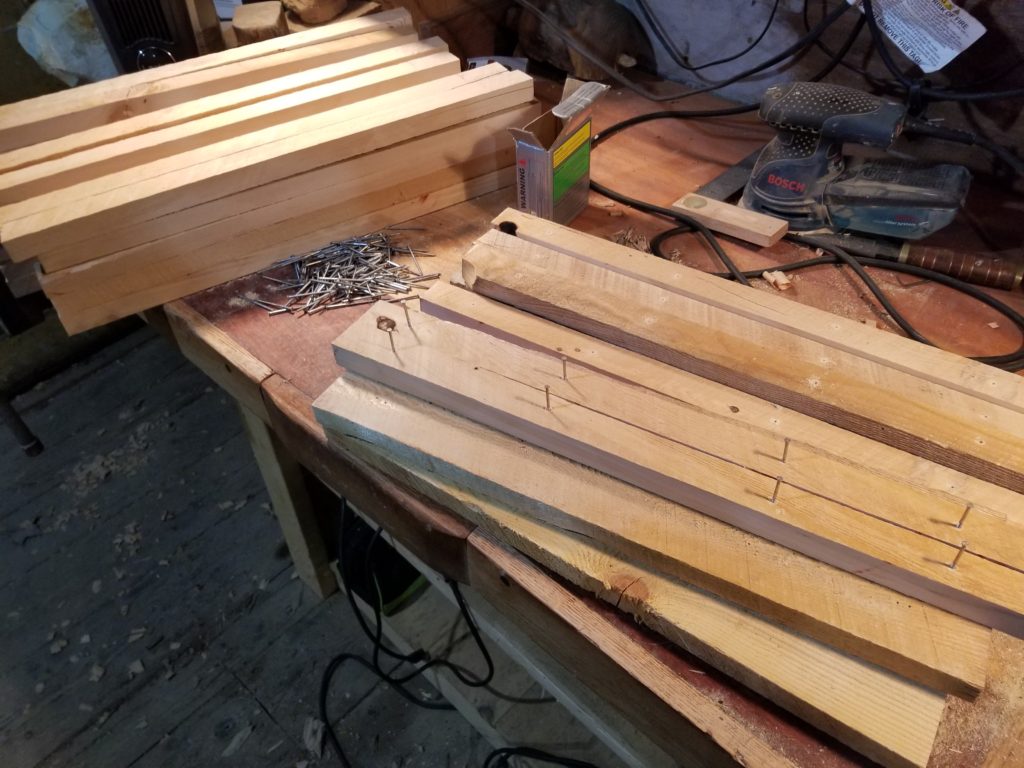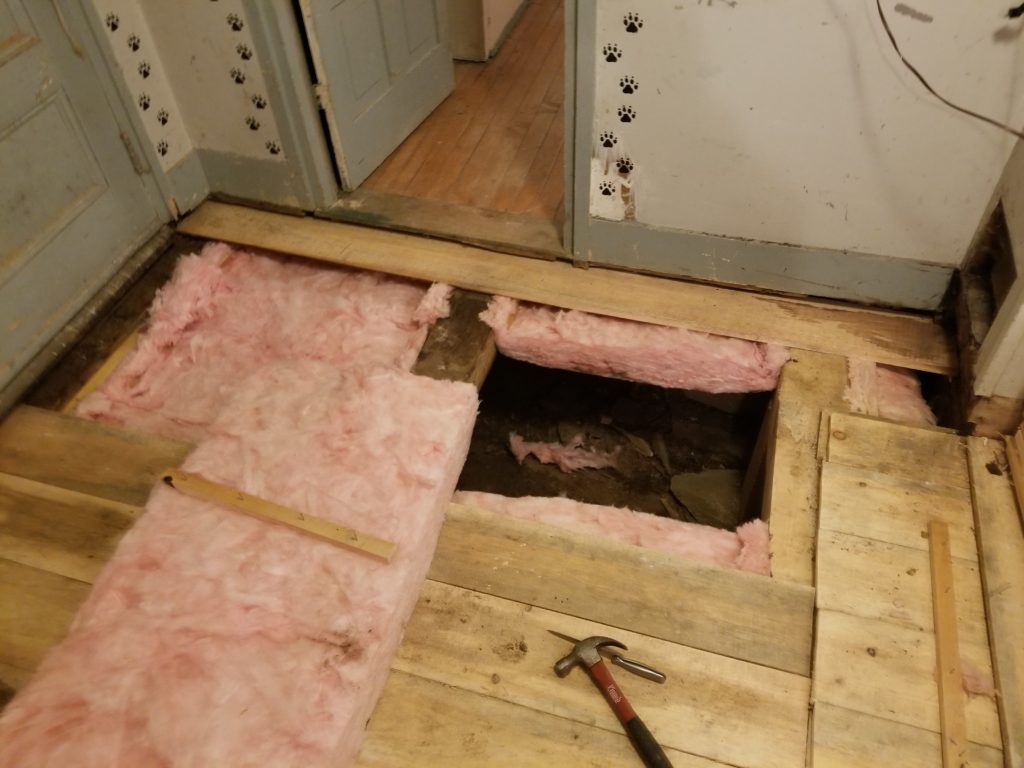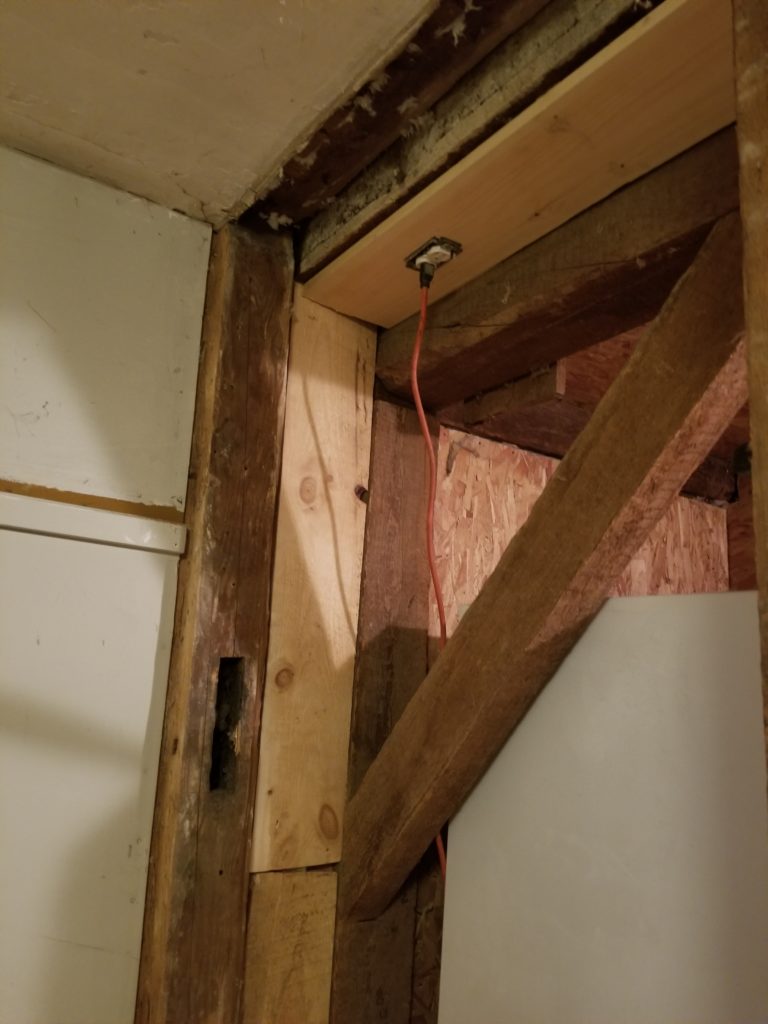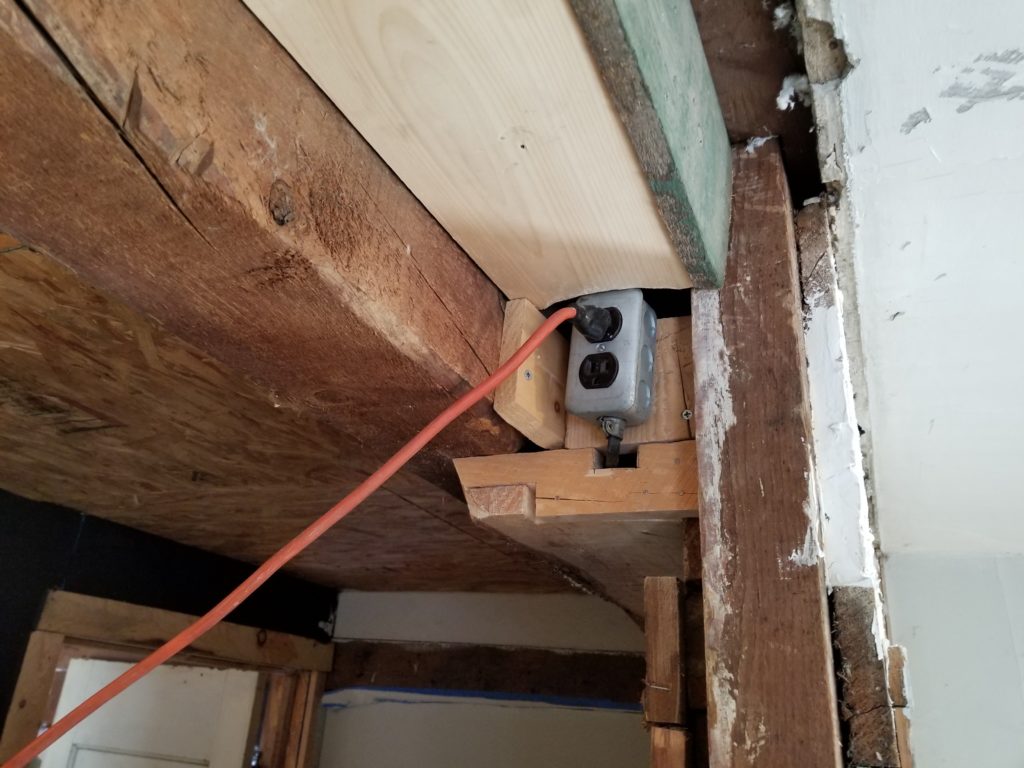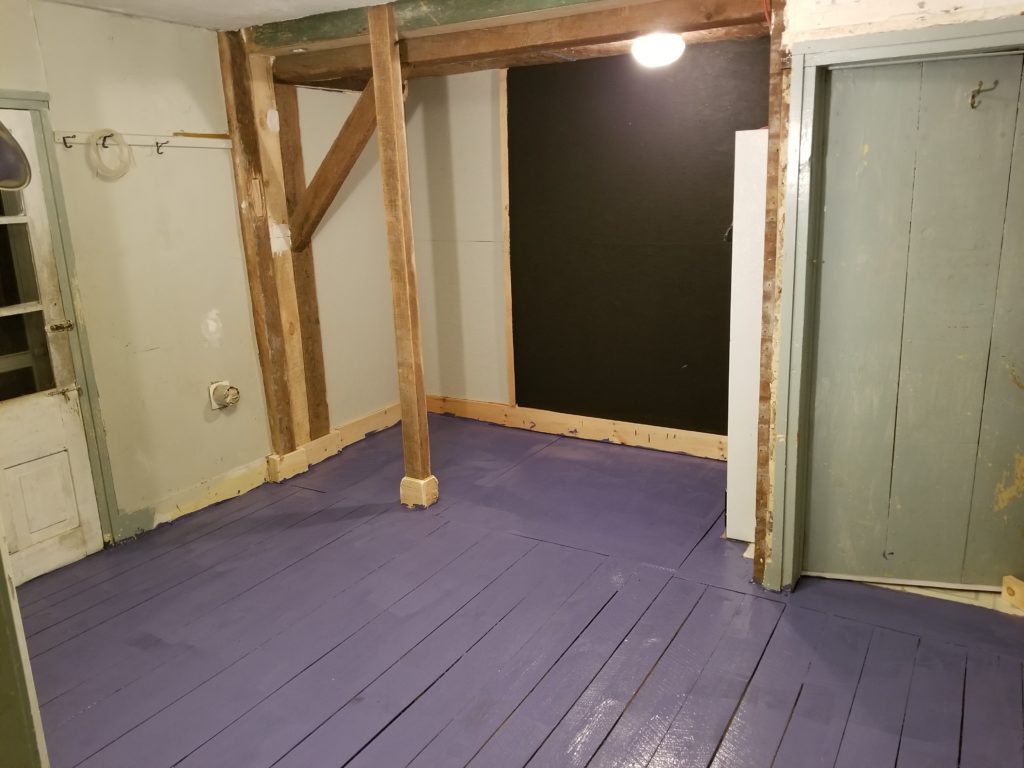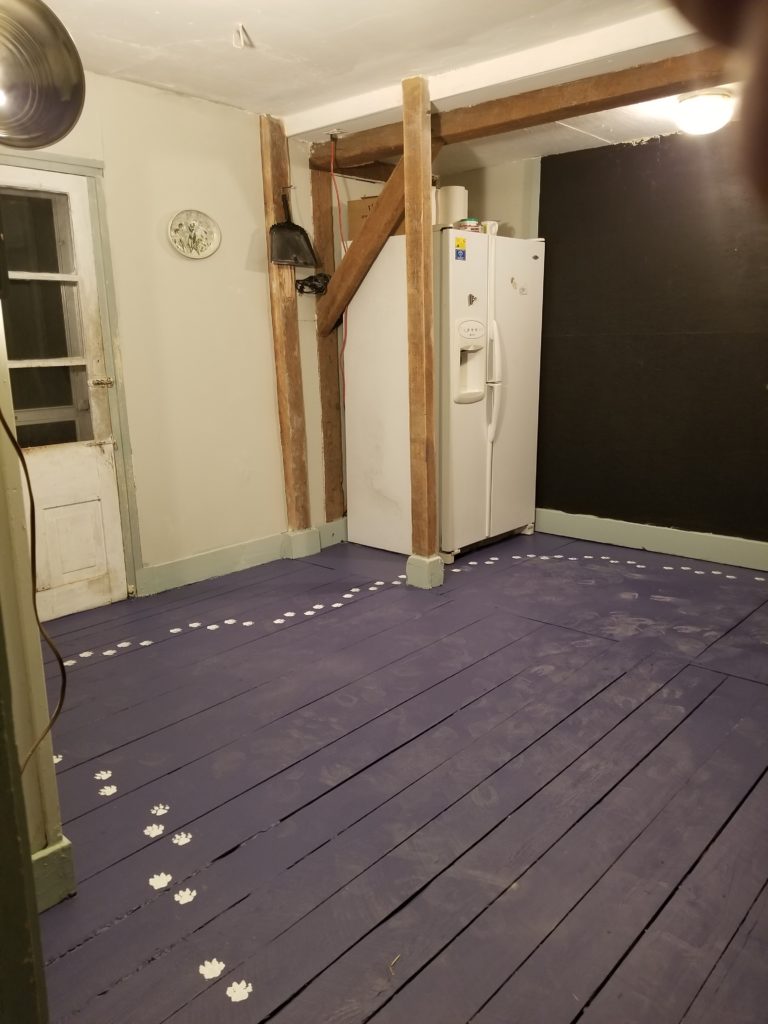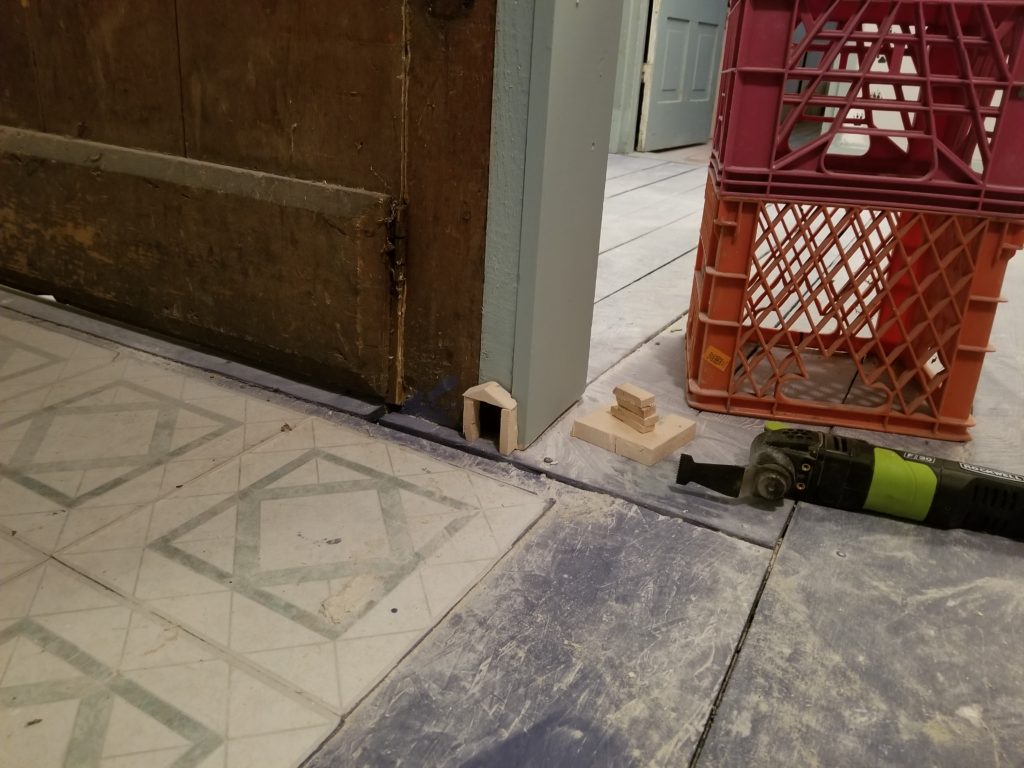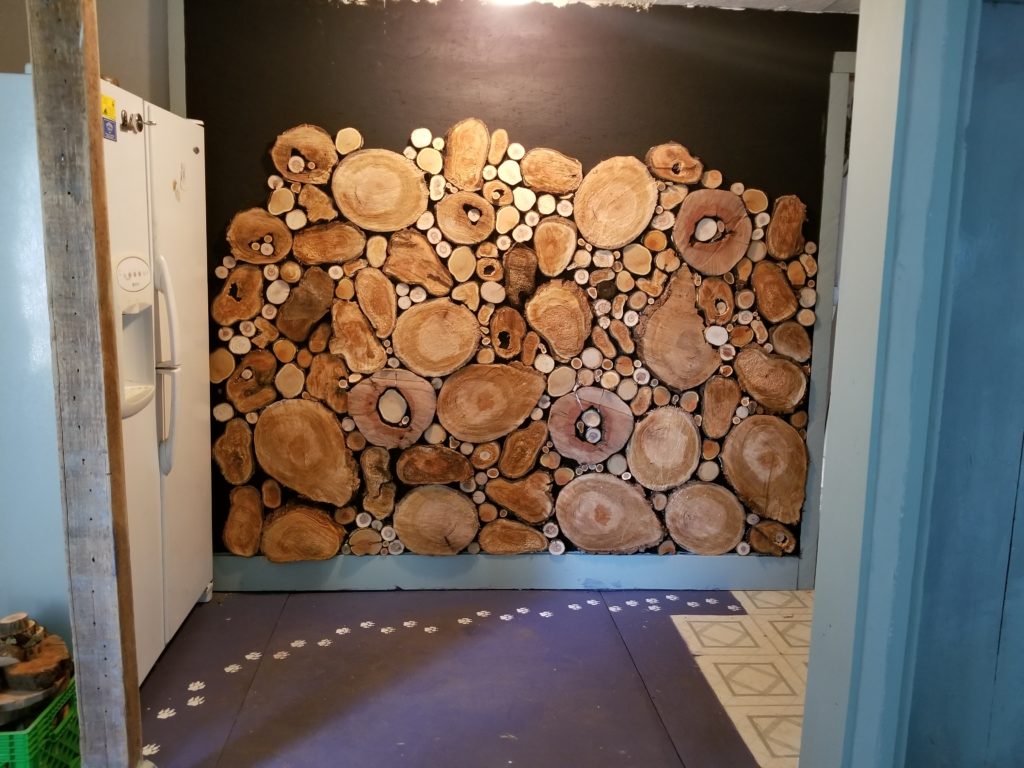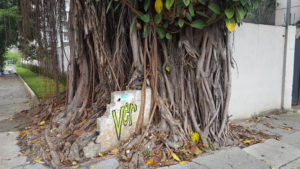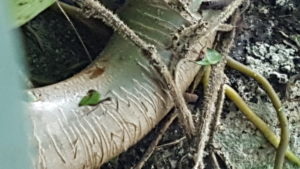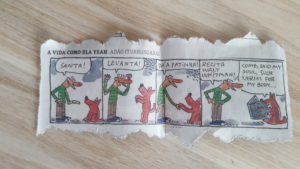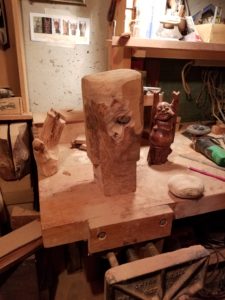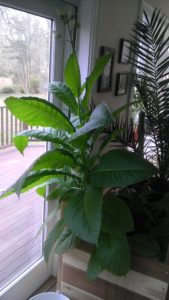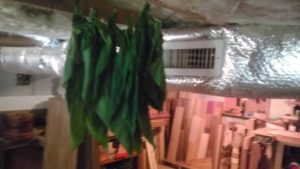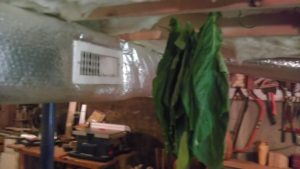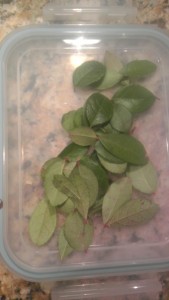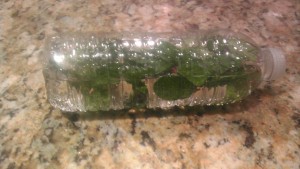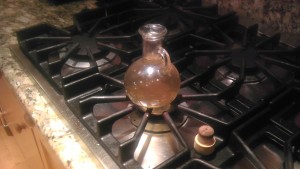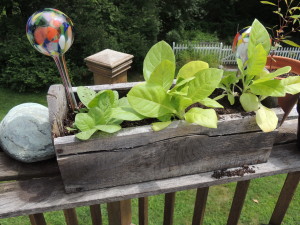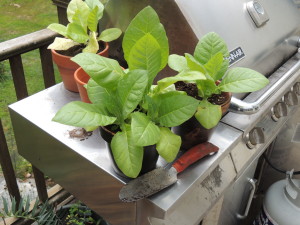Really. In many ways this missive will miss many marks, yet squirrels do eat acorns.
First, to translate, the Mohegans, a Northeastern US tribe of Native Americans, whose language is in the Algonquin family, might declare “Anôhcumunsh micuwak mushaniqak” if they meant to indicate that squirrels eat acorns. I get to this for several reasons and in several ways, but first, myself not being much of a Native American, wish to briefly go on record against the titling of this post as being an wicked act of cultural appropriation. I don’t think I even need to testify that my respect of all indigenous peoples in the practice of their culture far exceeds my respect of we in the practice of rabid modernity.
OK. It was my intent this week to gather a great mass of acorns and make them into cookies and acorn butter. I had done this once before three years ago and it turned out plausibly well, but that was before I had this ability to document such an enterprise so readily. I figured that this experience ought to be preserved that others might benefit (I do have to wonder how my imagination comes up with such hypotheses). Let me start with the process of gathering the acorns. Even though it’s really a pretty straight forward thing I found so many points on the way that were not acorns yet held related interest.
I set forth with my dog one morning near the end of September to the local woods. It’s a big woods, well, in this suburban area a woods of 1000 acres is considered big. It’s no wilderness. Much of it is forested in pine, maple and oak. Knowing when the right time is is very important. Too early and nary an acorn. Too late and the acorn weevils have won the day. Acorn weevils, you ask? Yes. I’ve never seen an adult, but I’ve seen the larvae. The larvae are planted into the acorns by their mothers. They eat their way out and drop to the forest floor. Funny looking things, supposedly.
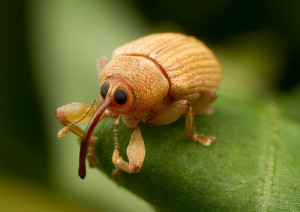
Anyway, I know to avoid acorns with a tell-tale little hole in them – that’s where the weevil larvae have eaten their way out and wreaked important havoc on the integrity of the acorn, especially for eating. I’ve not always noticed the hole that gets the larvae eggs in there. I was encountering about a 1 in thirty ratio of acorns with larvae. Maybe one in twenty where somehow there had been a larvae, you could tell from black marks in the nut flesh itself, but no larvae to be found. Most were clear though, of those I picked up, but if I picked up all I think most would not have been clear.
Now the actual looking for the acorns – of course they are near to oak trees, and in the woods I was in these would be red and white oaks, so named for the tones of the wood they yield. Red oaks drop acorns every second year, while white oaks produce new ones each year. The actual looking involves looking for the recently fallen, so to see a few recently fallen ones together suggests some sort of active drop zone, as soon the squirrels will come, and they can tell the good ones. Thankfully the squirrel population in this woods is low, as we have just enough wild cover that we have natural predators. Foxes, coyotes, an occasional lynx. Now and then a bear proves that he’s more than a myth, but I don’t see the bears as really gobbling up all the squirrels. Remember the fox who ran by in the early spring? I think that’s a squirrel in her mouth. The looking for acorns though, as one goes quietly in the underbrush, guided by what seem nearer or further oak-like silhouettes and the occasional sudden messenger sound of an acorn falling close or just a little farther away – should I go and pick that one up? Has it fallen just for me? Quercus, Quercus, can you hear me – do you laugh that I would think to call you Quercus? Might the Algonquins who called you mitigomij, the Abenaki who called you wachilmezi, the Cherokee who called you tsu-s-ga – might they know your real name?
And here I stopped for a moment. Real name. How powerfully romantic. And for what, the ancestor spirit of all oaks? Still present? Are you here, can you hear me? If I could speak your name, if you had a name, would you answer? Will you open the door for me, the door to where the great oaks live powerfully ideal oak lives,raining apple-sized acorns down, fit for dire Pleistocene mega-squirrels, the door to where abundance and magic dwell? If only I knew your name. Even the earth-wise natives who roamed the forests and lived on the acorns, did they know your name, and if so how, how is it that they had different names, unless a name is only a name for the limited experience we can have, so that a name is like “I encountering what I imagine you to be” and is more colored with our imagination than the real oak or object named. Maybe names are the weakest things, a device of megalomaniacal monkeys, a tool perhaps for them to refer to some cluster of phenomenon (and thereby hopefully control them), but by no means possessed of the magic and truth they’d like to imagine. Quercus, can you open the door? If there were true names, names inseparable from the being they named, what would it be? There’s another challenge I’ll mention, that of this oak vs. that oak. It is easier to imagine that a given oak has a given name. The tree Orgovius. The tree Reefshnees. One might never know how they got such names, but it could be that only the given tree could have such a name. All trees though, especially trees, are connected in time and space through the seeds, that the first tree morphed and gave life to ten or a thousand trees – I think it is right to consider those children very much like branches, and those children then each another thousand, until somewhere some one of them was Oak, and the millions of children and progeny are also oak and that invisible tree which spawned them all lives in them and (it taunts the imagination) in many ways is presently here, is a giant thing that is more than spirit, and the name of that – perhaps such a name, were it to exist, would be not something rendered in a narrow frequency of sound, but maybe in smells and a music of sounds and patterns of growth and decay, or maybe (the name) is just not a thing for it, that while it is real and immense and present it has no recognition whatsoever of our puny magic of names.
Without true names I am only as good as my attentiveness to what is here. If there is an available magic it is found in being present. I hear you, though I know you not. Look, there are a bunch of, why they are practically watermelons they are such big acorns, and there, where the path rolls down, look how the fallen acorns have gathered in clumps, and here, in this hollow with last years leaves, so many, so many fat and good ones. The more I looked the more the blessings I received until I had filled the five pound bag almost all at once it seemed, and indeed, could have gone on had I a village of helpers to un-shell them, but for now, this business of gathering acorns, accomplished, and with wonder and thankfulness.
Before going on I do must have to say that another branch of the thought on names, their true-ness (as inseparable from the being so named), and even leaving aside for a moment the comparatively new idea to me that no true names may exist, a rush of thoughts were drawn along the line of the ancient story of the Tower of Babel. Remember that thing with the tower? Supposedly at that time all persons spoke the same language. Perhaps not a language of “true” names but one shared by all. The word for oak, whatever that was, was never in dispute, there was only one name. A very amazing circumstance. That across the whole of the earth all monkeys shared the same words for the same things. And it was arbitrary? The word was somehow randomly chosen? Or is it that the names came from our nature, as I suggested above, I encountering both you and what I imagine you to be. Tiger. What a grave muddle, not a random thing nor necessarily a true thing, yet from our nature. Something perhaps of a necessary consequence. Anyway I’ve not even gotten to the point yet, that here supposedly we were, all sharing a language and building towers and other monkey what not when supposedly God takes notice. Not liking the look of that, he says. I shall confound your tongues so that you will no longer understand each other. Is this why I cannot talk to a tree? Back before this confounding, if there was only one language, did all creatures understand it? There’s a lot one gets into when gathering acorns, or at least that one can. The forest is full of avenues of wonder.
This story of the confounding of tongues has always sat ill with me. If we’re gonna go for an omnipotent creator God, could that God really be so piddling that he was afraid that people might understand each other? Or was the message subtler, that since perhaps there really are no true names, that therefore to rely on truths that can be gotten to via language alone, is to be deceived from the start, is to be self-enchanted, too much in a land of monkeyshines and too little in the immense sea of what is possible. Maybe even knowledge, if this is the metaphysical digression paragraph, is like that too. In the grand scheme it’s either small or wrong or both. Whether the reason we don’t have true names is because such just aren’t available, or because the almighty creator got wigged out at us very tricky monkeys, the facts are that neither do we understand each other nor do we understand things with a keen and magical precision. It’s not going to happen soon either. The long and long of it is that I gathered up a bunch of acorns.
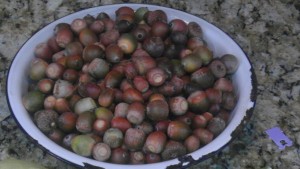
So finally I can get on to the story of what I did with these acorns, but it could be that most of you will not get here. Oh wait – I’m having a reflective moment. Maybe, oh, no – I won’t go that way. Really – we get to progress on the acorn channel. Here I am preparing philosophical cookies. I know beforehand that unless great care is taken they will come out objectionable to modern man. Bitter. But this is a little ahead of the story line. Shelling. Five pounds of acorns. About three hours. Here are the tools I used.
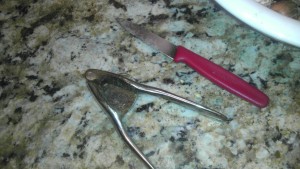
The nut cracker is excellent with that backing plate. The knife is good too in that it’s not too sharp. It’s pretty easy to stab or slash oneself accidentally when applying what sometimes is more than a little force. The array of bowls follows.
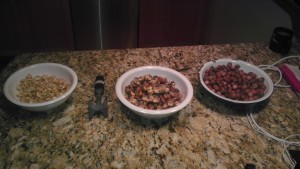
Cracking one acorn then prying out the nutmeat was a very slow way to go. Better to crack thirty or fifty in a row, then pry out the batch. The cost of changing the tools in your hand fifty times pays back well. Also more force on the crushing better than delicate. They are not brittle, so it’s not like a little crack in the shell means the resistance is broken. Crush quickly and strongly. Next.
Three hours later, a bowl of shelled acorns. I did not take photos of the acorns containing acorn weevil larvae, that is too visceral a negative association.. Google it if you must.
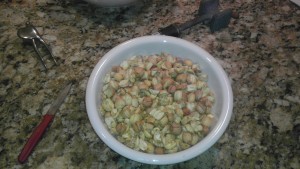
I set the acorns in water and set them down to leach. When the water got red I dumped and re-filled, about every four hours.
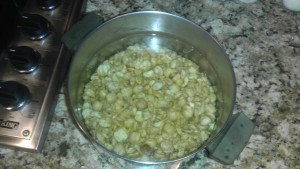

I think the last time I did this step I leached with a low simmer of heat. This time I did not. It took six rinses to get the tannins out, or so I thought. Foreshadowing.
I then took the acorns and put them under a towel and beat them. It was nothing personal. I think this step would have been better before the leaching, so as to expose more surface area. After roasting they looked great.
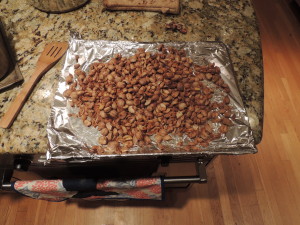
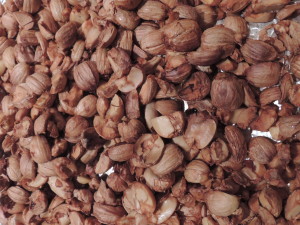
And I ate a few but they were still quite tannic – bitter. I plowed forward though, for sugar and honey were on the other side – what is not fixed by sugar and honey, oh America? Tell me!
I used a blender to grind them to a peanut butter like consistency. About half of them actually.
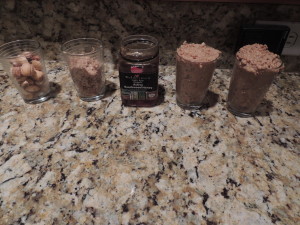
In the first cup above are just a few shelled acorns, as I said, noteworthily bitter, not a flat stop don’t eat it bitter, but only for those not against real bitter. The second cup is just a dry grind of same. The third adding honey, but not so much, maybe two ounces. The fourth with salt and honey. Overall these all were just a little too bitter for any common taste buds, mine notwithstanding.
Not wanting that the cookies should be a fail, though, I wondered if heat in the leaching would produce a stronger tannin removal. I took the second half of the acorns and gave them two hour long boiling rinses. The water turned heartily brown red the first time and less so the second, so I thought, I think rightly, that the end of the utility of the method was near. I could have ground them more and repeated, but to my taste they now had a nice ‘signature bitterness’ – flavorful, like hops or too long brewed tea, something one could identify and appreciate. Therefore once again, I proceeded. The acorn starch below I got at the same Asian market from which I rescued the radish last year.
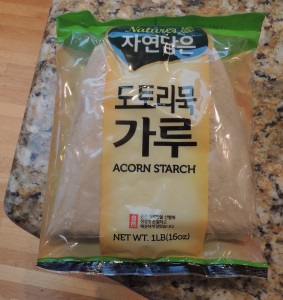
Acorn Oatmeal Chocolate Chip Cookies.
1 cup butter, softened
3/4 light brown sugar
3/4 cup coconut sugar
2 eggs medium eggs
1 tablespoon vanilla extract
3/4 cup all-purpose flour
3/4 cup acorn starch
1 cup rolled oats
11.5 oz milk chocolate chips
1 teaspoon nutmeg
3/4 cup acorns ground to a chunky nut butter consistency
3/4 cup acorns not too much chopped at all – chunky
Mix it all together, use a tablespoon to portion out dough. Bake at 350. Made 36.

Fine milk chocolate chips, a cup and a half of sugar were enough to persuade the majority of tasters, including some very polite Jehovah’s Witnesses who had stopped by, that these were good cookies. Eating a few myself I feel the anticipated benefits – clear vision, increased strength, enhanced clarity of thinking, exuberance, I think I’ll live longer, I’m now impervious to dull axes.
I ground the remainder of the acorns with a hand grinder and mixed them with the initial bitter ground nut butters. I mixed a much more liberal amount of honey with these, and added just enough salt. I am thinking an acorn baklava next, with this surplus. I know it will work.
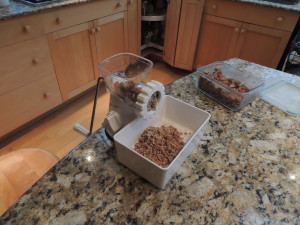
All in all this was a very satisfying journey. Lots of mistakes, lots of things learned, lots of little surprises and twists, some decent eats, some knowledge of what our ancestors had to negotiate to eat acorns. I’ll close with a link to real native American acorn preparation narrative. Much more grounded and direct than this. At the same time those are California acorns, and this is Massachusetts, and maybe the deal is that you have bring who you are to your acorn process or it won’t come out right. Or maybe not.
Thank you and all the best to you dear readers.
